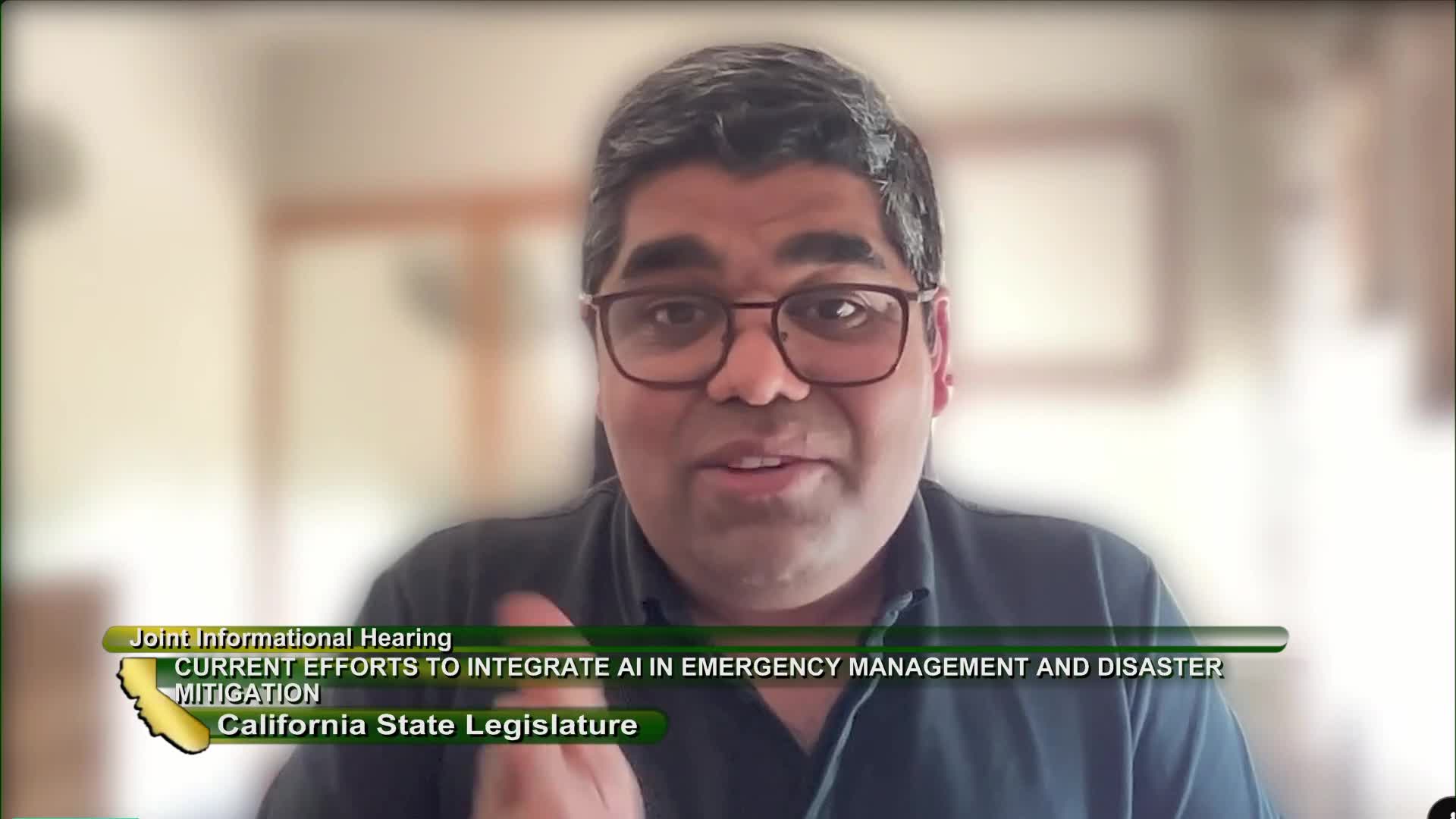AI Revolutionizes Utility Planning to Combat Wildfire Risks
August 28, 2024 | Governmental Organization, Standing Committees, California State Senate, Senate, Legislative, California
This article was created by AI summarizing key points discussed. AI makes mistakes, so for full details and context, please refer to the video of the full meeting. Please report any errors so we can fix them. Report an error »

In a recent government meeting, discussions centered around the use of artificial intelligence (AI) in managing public utilities and enhancing safety measures against natural disasters. A key focus was on the undergrounding of power lines, a strategy aimed at reducing the frequency of Public Safety Power Shutoffs (PSPS) during extreme weather conditions, particularly in areas prone to wildfires.
Senator D'Agostino highlighted the importance of this initiative, emphasizing the need for practical solutions to minimize electricity shutoffs during critical times, such as heatwaves accompanied by fire threats. He inquired about the role of AI in identifying high-risk locations for undergrounding power lines. Responding to this, utility representatives confirmed that AI is indeed being utilized in risk modeling to pinpoint areas most susceptible to extreme winds and potential ignition sources. This technology also incorporates structural analysis to assess the potential impact of wildfires.
The conversation then shifted to the potential application of AI in predicting seismic activity. A senator raised the question of whether AI could be developed to forecast earthquakes, given the ongoing seismic threats in the region. An earthquake engineer responded, noting the challenges in predicting earthquakes due to the limitations of current data collection methods and the depth of seismic activity, which often exceeds the reach of existing sensors.
As the meeting concluded, participants expressed optimism about the advancements in AI technology and its implications for public safety and utility management. The session underscored the ongoing efforts to leverage innovative solutions in addressing the challenges posed by natural disasters, while also acknowledging the limitations that still exist in certain areas, such as earthquake prediction. The meeting ended with a call for public comments, although none were presented.
Senator D'Agostino highlighted the importance of this initiative, emphasizing the need for practical solutions to minimize electricity shutoffs during critical times, such as heatwaves accompanied by fire threats. He inquired about the role of AI in identifying high-risk locations for undergrounding power lines. Responding to this, utility representatives confirmed that AI is indeed being utilized in risk modeling to pinpoint areas most susceptible to extreme winds and potential ignition sources. This technology also incorporates structural analysis to assess the potential impact of wildfires.
The conversation then shifted to the potential application of AI in predicting seismic activity. A senator raised the question of whether AI could be developed to forecast earthquakes, given the ongoing seismic threats in the region. An earthquake engineer responded, noting the challenges in predicting earthquakes due to the limitations of current data collection methods and the depth of seismic activity, which often exceeds the reach of existing sensors.
As the meeting concluded, participants expressed optimism about the advancements in AI technology and its implications for public safety and utility management. The session underscored the ongoing efforts to leverage innovative solutions in addressing the challenges posed by natural disasters, while also acknowledging the limitations that still exist in certain areas, such as earthquake prediction. The meeting ended with a call for public comments, although none were presented.
View full meeting
This article is based on a recent meeting—watch the full video and explore the complete transcript for deeper insights into the discussion.
View full meeting
